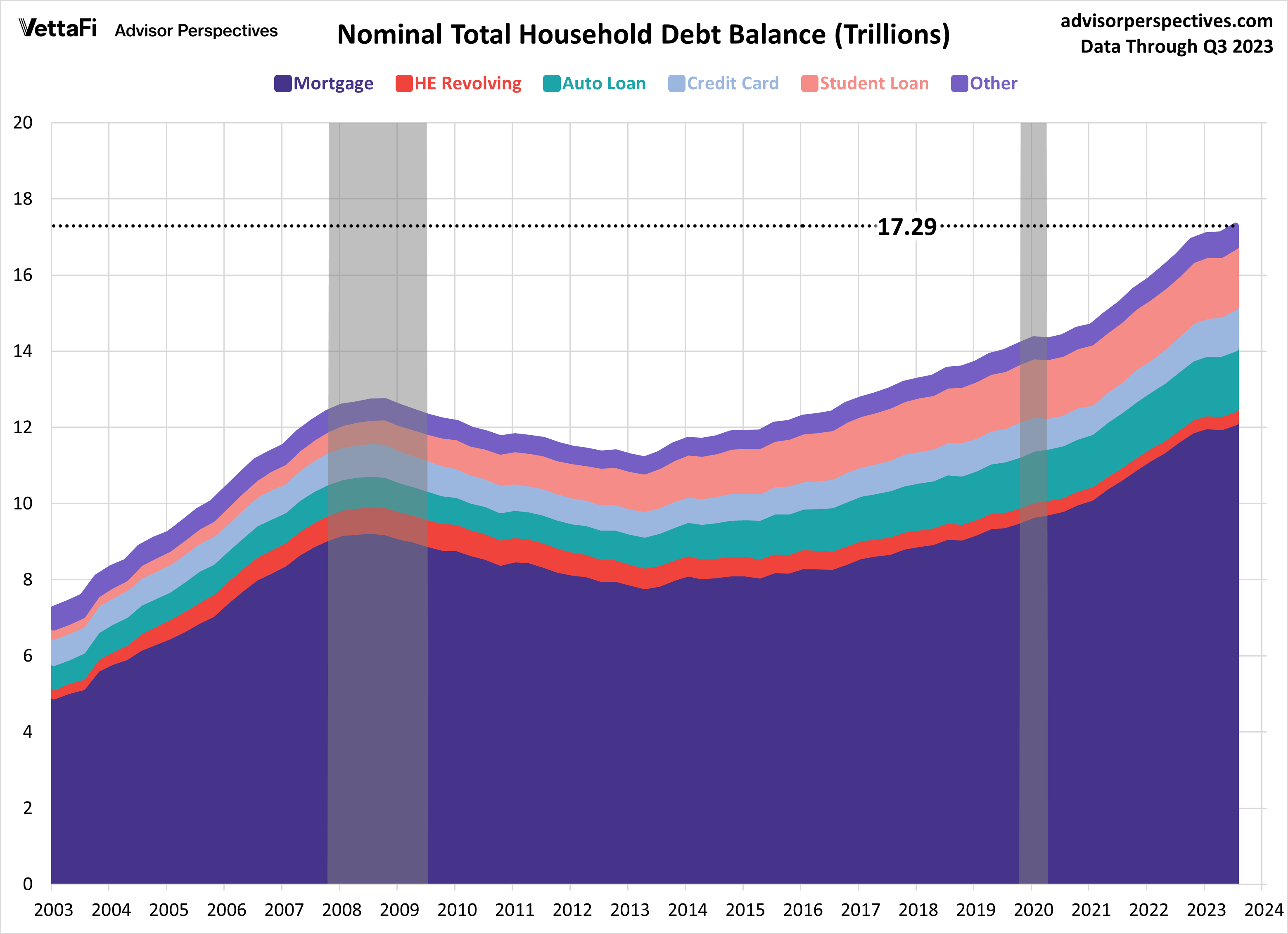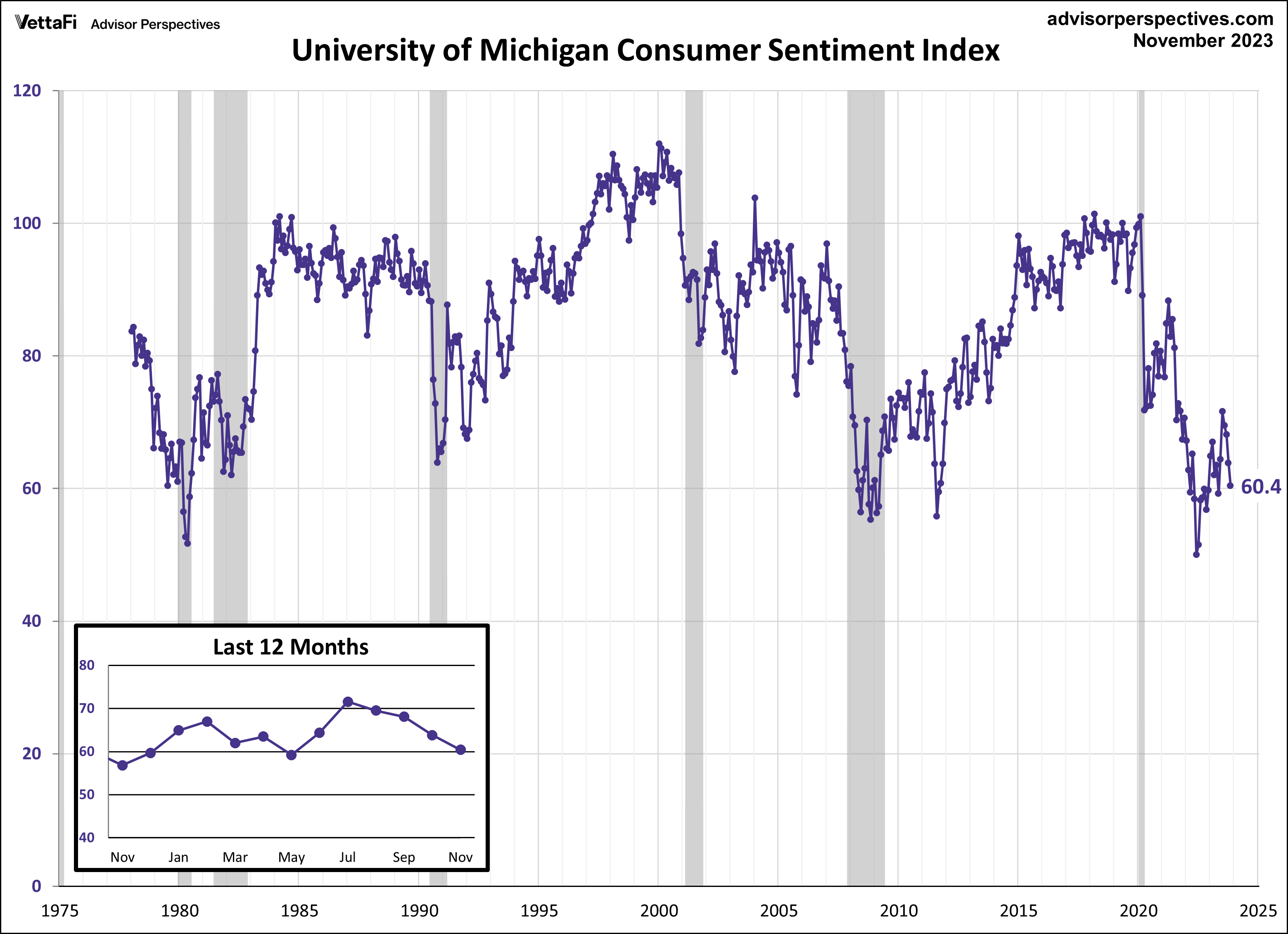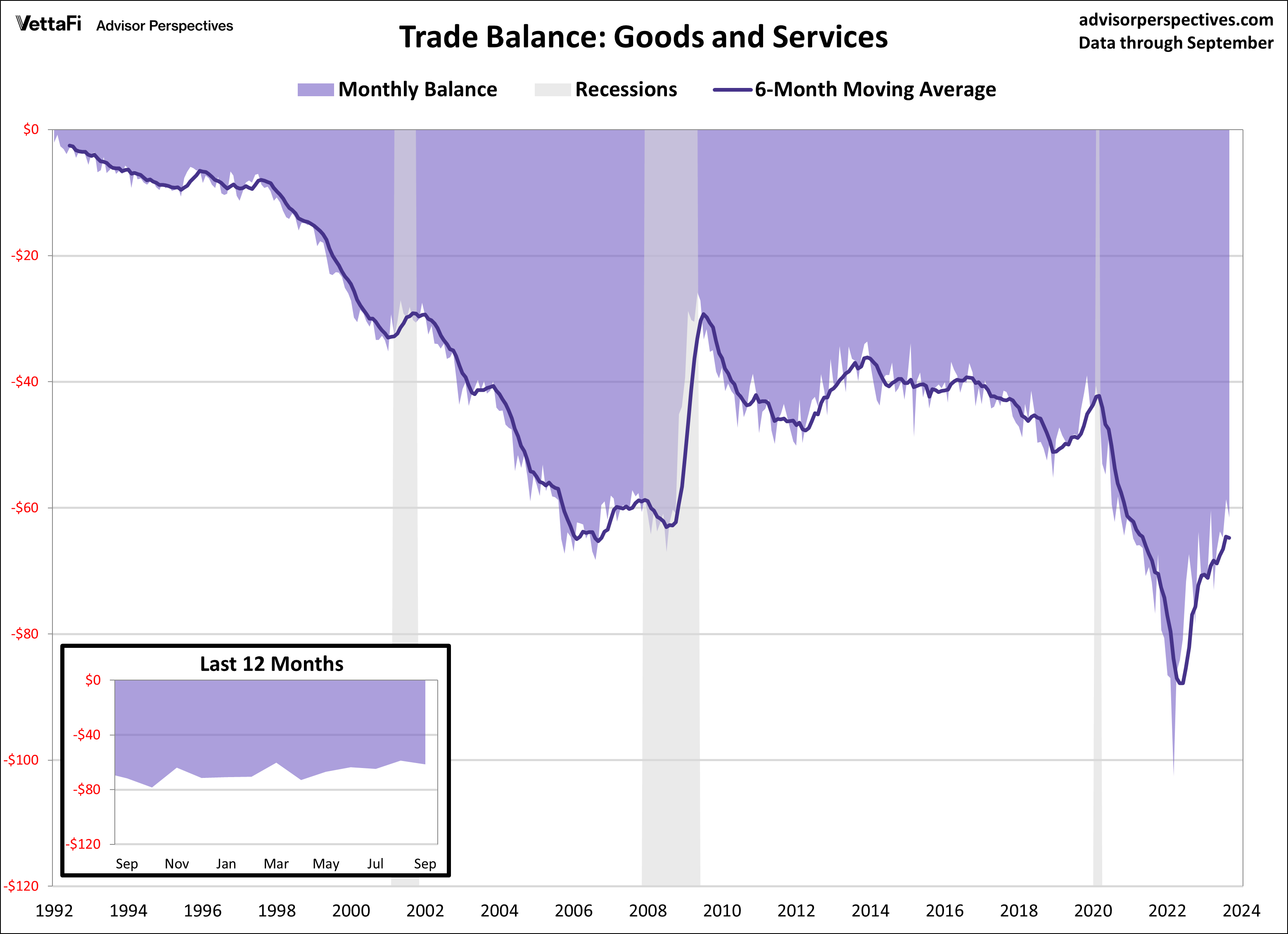Economic indicators are released every week to provide insight into the overall health and performance of an economy. They serve as essential tools for policymakers, advisors, investors, and businesses. They allow them to make informed decisions regarding business strategies and financial markets. In the week ending November 9, the SPDR S&P 500 ETF Trust (SPY) rose 0.72% while the Invesco S&P 500 Equal Weight ETF (RSP) was down 0.13%. The economic calendar for last week featured a limited number of releases. But three noteworthy economic reports warrant attention. They are the quarterly household debt and credit report, the Michigan Consumer Sentiment Index, and the trade balance.
These data points can collectively provide insights into various aspects of the economy, especially consumer attitudes and behavior.
For example, household debt can affect consumer sentiment. That can then influence consumer spending and thus impact trade dynamics in the broader economy. In the upcoming sections, we will summarize the latest data on each of these indicators.
Economic Indicators: Household Debt and Credit
In the latest quarterly household debt and credit report released by the NY Fed, we saw a notable $228 billion uptick in household debt, reaching a record $17.29 trillion in Q3. The latest data represents a 1.34% increase from Q2’s debt level of $17.06 trillion. This surge was primarily fueled by increased mortgage, credit card, and student loan balances.
Specifically, mortgage balances hit an all-time high of $12.14 trillion (a 1.1% increase). Credit card balances reached a record high of $1.08 trillion (a 4.7% increase). Student loan balances climbed to $1.60 trillion (a 1.9% increase). Auto loan balances rose to $1.60 trillion. However, a closer breakdown showed that student loan balances edged slightly above auto loan balances, reclaiming their position after a brief shift in Q2. This comprehensive report serves as a gauge for the financial conditions of U.S. households, offering insights into their economic well-being.

Michigan Consumer Sentiment
Consumers continue to grow less optimistic about their current and future economic conditions, according to the preliminary report for the Michigan Consumer Sentiment Index. The November preliminary report came in at 60.4, marking a 5.3% decline from October’s final reading. It fell short of the forecasted value of 63.7. This is the fourth consecutive decline for the index. That puts the index at its lowest reading in the last six months.
The Michigan Consumer Sentiment Index is a monthly survey measuring consumers’ opinions regarding the economy, personal finances, business conditions, and buying conditions. In the latest report, consumers showed decreased confidence levels for current and future economic conditions. Their main concerns revolved around high interest rates, ongoing global conflicts, and inflation.
Consumer spending accounts for approximately 70% of the economy. So consumer attitudes are closely monitored, as their confidence levels tend to impact their spending behavior and, consequently, economic growth. With the holiday season approaching, the usual surge in consumer spending could encounter headwinds due to the recent dip in confidence.
The Consumer Discretionary Select Sector SPDR ETF (XLY) is tied to consumer sentiment.

Trade Balance
The U.S. international trade deficit widened more than expected in September despite exports rising to its highest level in over a year. The trade deficit expanded by 4.9% in September to $61.54 billion, larger than the $59.90 billion forecast, due to a larger increase in imports than exports. Exports rose 2.2% to $261.11 billion, while imports rose 2.7% to $322.65 billion.
The trade balance, which reports on the country’s imports and exports of goods and services, provides insights into foreign trade dynamics, serving as a gauge for the overall growth or contraction of the economy. Despite the recent growth, the deficit has shrunk 13.0% this year and is 14.2% smaller compared to a year ago.

Economic Indicators and the Week Ahead
The upcoming week will feature the latest inflation and consumer spending data. On Tuesday, the Bureau of Labor Statistics will release October’s Consumer Price Index (CPI), followed by the Producer Price Index (PPI) on Wednesday. Also, on Wednesday, the Census Bureau will release retail sales data for October.
Current forecasts show that headline and core CPI increased 0.1% and 0.3% from September, respectively. Additionally, headline and core PPI are projected to have risen by 0.1% and 0.2% from September, respectively. Retail sales, which will impact interests in the SPDR S&P Retail ETF (XRT), are expected to decrease for the first time in seven months, falling 0.1% from September.
For more news, information, and analysis, visit the Innovative ETFs Channel.








